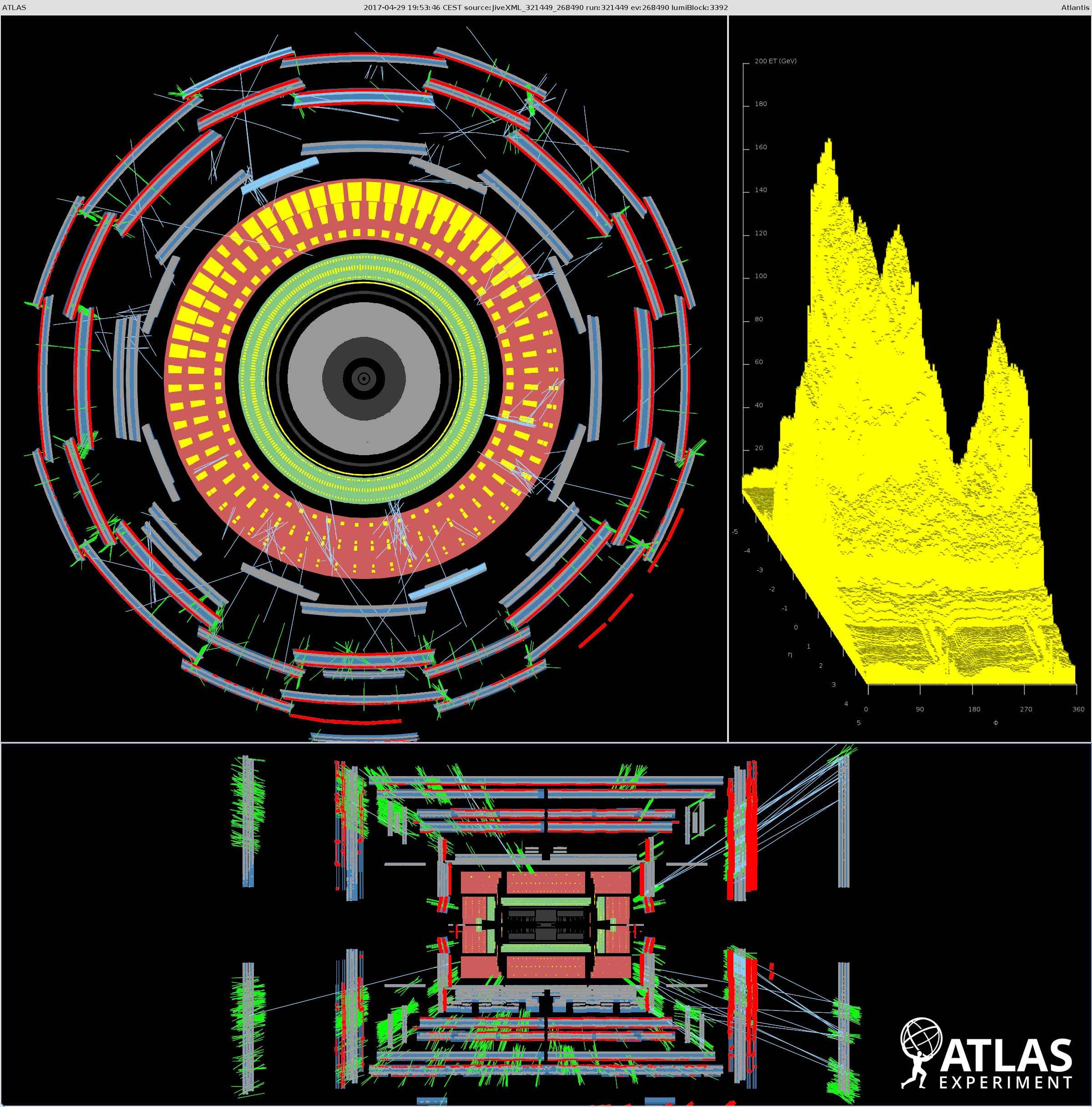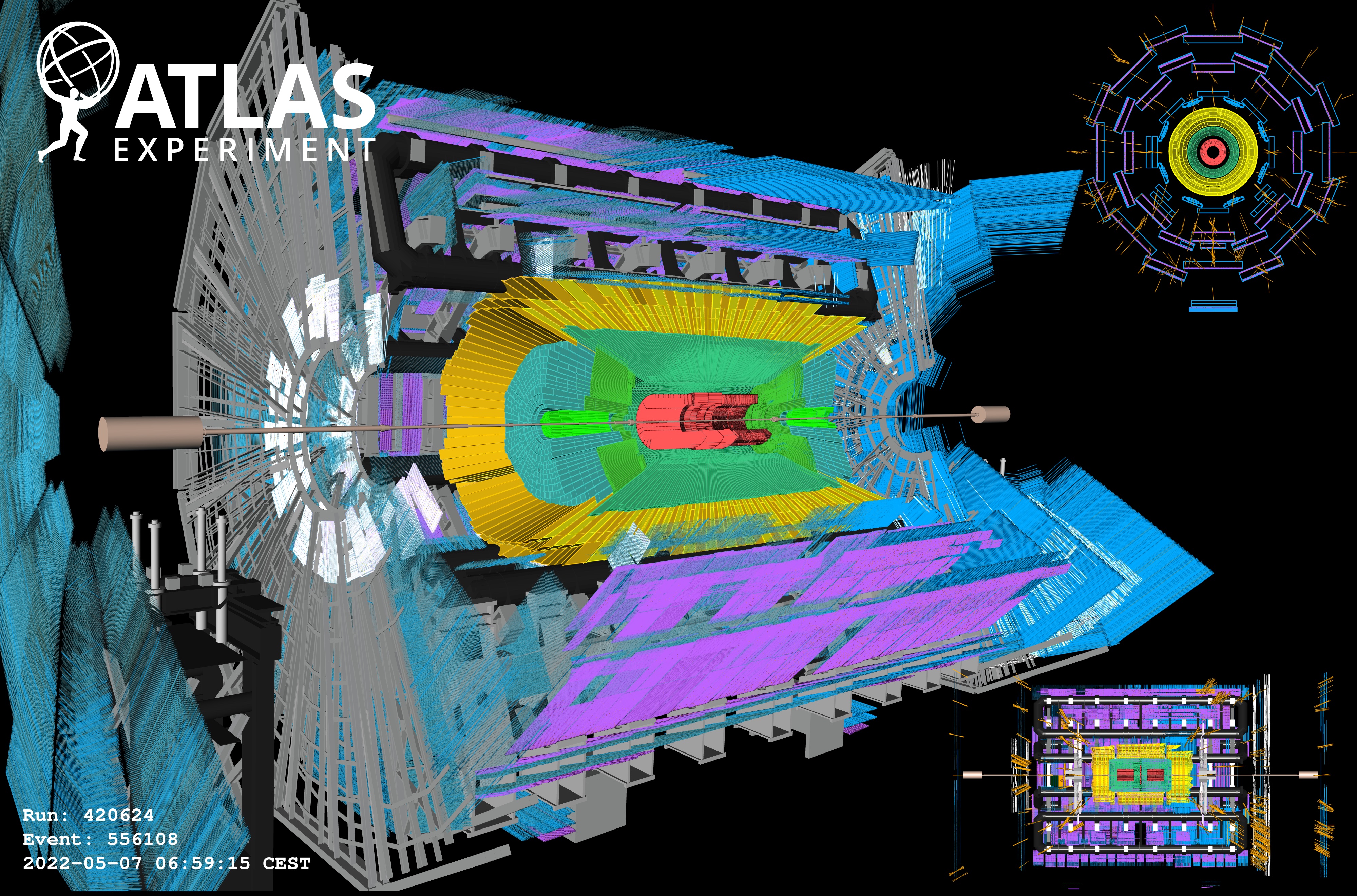Beams return to the ATLAS Experiment
29 April 2017 | By

With the year’s first proton beams now circulating in the Large Hadron Collider, physicists have today recorded “beam splashes” in the ATLAS experiment.
Like a giant wave striking the shore, beam splashes are generated when circulating protons hit collimators in the beam pipe, leaving a spray of particles to wash across the ATLAS detector. They provide signals that illuminate the various sub-detectors, allowing physicists to synchronise the ATLAS detector elements to the LHC's clock. This is one of the final actions before protons once again collide in the heart of ATLAS.
The arrival of beam splashes marks the start of a new year of exploration, which should see records set for instantaneous luminosity. “To study the high-energy frontier, we need to keep our detector at its best performance,” says Masaya Ishino, ATLAS Deputy Run Coordinator. “This requires tremendous effort, not only in the control room, but also from our physicists all over the world. We are ready to cope with the high instantaneous luminosity expected, the highest the ATLAS experiment has ever seen.”
“ATLAS teams have worked very hard over the last months to prepare the experiment for the luminosity challenge,” confirms Alexander Oh, ATLAS Run Coordinator. “We have made various improvements during the year-end-technical-stop and are eager to see protons colliding again. Our goal is to take collision data with the highest possible efficiency and quality to optimally explore the physics at 13 TeV energy.”
With collisions scheduled for the end of May, ATLAS physicists will use the coming weeks to prepare: fine-tuning the subdetectors, testing the trigger and data acquisition systems, and monitoring the circulating beams.
Links:
- The LHC has restarted for its 2017 run, CERN News
- Splashes for Syncronization, ATLAS News
- First LHC Beam 2017: Impressions from the ATLAS Control Room, Photo Collection



